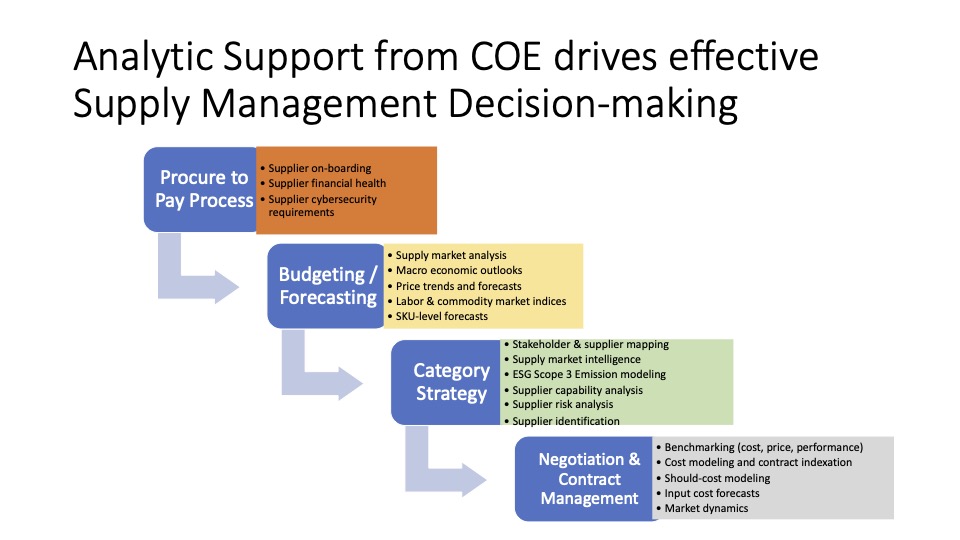The Critical Role of the Cross-Functional Team
A cross-functional team (XFT) is generally created by a business unit Executive Vice President – who assigns professionals to participate. A XFT is formed in response to a very specific business need, and is chartered to deliver very specific business outcomes that they held are accountable for delivering, as well as for ongoing management of the integrated process. In most cases, a XFT that includes supply management is composed of several other functional representatives who represent their function. Many SCM groups are still not comfortable with this situation – as it creates a fundamental tension. Why? Because a functional representative may in some cases be asked to sub-optimize their functional outcomes to optimize the overall business objectives. (For example, a team may not get the best price from a supplier, but will choose a supplier that provides the best delivery reliability). The challenge of the team is to ensure that all functional requirements are addressed, but that consensus is reached on maximizing the overall desired business objective.
There are several roles at the SCM functional level that oversee all of the XFT’s.
A XFT member refers to a SCM professional who sits on the team and works with the team members towards achieving the stated business objective. These individuals are not in a position to aggregate for other XFT’s – so need to work with them on constraints.
A functional aggregator (FA) is an associate who specialize buying the same material or service across multiple business units, and are generally assigned to manage the spend for a specific commodity or service across multiple business units. These individuals are tasked with resolving conflicts that may arise between XFT’s and the supplier, and make decisions related to allocation of aggregate spend. The functional aggregator steps in when conflicts arise in XFT’s related to allocation of spend across business units to more than one supplier. The FA also works to manage constraints that may arise in delegating spending to suppliers. A relationship manager would be the equivalent of a functional aggregator – or alternatively it could the buyer who manages the XFT. As shown below, the aggregator must consider volume requirements, supplier capacity constraints, and operational business unit requirements to optimize sourcing decisions across business units.
Buyers for a given commodity may play the role of the functional aggregator for a particular commodity group, while planners, schedulers, and coordinators reside on the cross-functional team that is focused on the business objective of improving production efficiency.

In cases when major conflicts arise, the VP of SCM may need to intervene in establishing guidelines for aggregation. This can occur when conflicts arise between two business units, and the VP and his representatives need to make a decision to ensure the optimal supply solution.
Subject matter experts are knowledgeable about specific aspects of a functional element that may run across multiple lines of business. They are knowledgeable enough to facilitate and to drive improvement. They may also be aware of developments in the field, in terms of identifying “blue sky” technologies, emerging facts and trends, and serve as resident experts in a particular process or line of business. As opposed to functional aggregators that are involved in day to day activities, people will go to SME’s to ask questions and better understand key issues such as scheduling, surplus materials, policy and procurement issues, and multiple other areas that are critical to your line of business. SME’s could be located in a particular business unit, because they know the most about a specific area, but could also be located anywhere. Cross-functional teams will rely heavily on SME’s for advice on specific issues, and may call on them to review their decisions on a regular basis to ensure that they is optimal.
These roles may be very different for your people to understand and engage in. Training should focus on role plays, situational assessments, and scenarios in which tough decisions need to be made. By putting people into situations where they are forced to encounter these environments, openly discuss them, and identify how the decision will impact the greater good of the corporation, successful change for cross-functional teaming efforts can occur.
- Categories:


